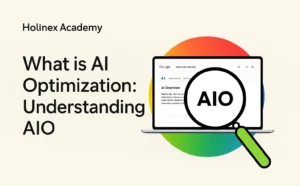As you sit down to edit your latest video project, artificial intelligence may already be enhancing and automating parts of the process. AI has made massive strides in recent years, and video editing software has started incorporating AI to improve the editing experience. For example, AI can analyze footage to detect faces, objects, speech, and more. It can then automatically organize clips, suggest the best shots to use, trim clips to the most engaging parts, color correct, and even create rough cuts.
While AI cannot fully replace human creativity, intuition, and judgment, it can handle tedious, repetitive tasks and enable editors to focus on the creative aspects of storytelling. In this article, we explore how AI is enhancing and automating video editing processes, the current capabilities and limitations, and what the future may hold as AI continues to progress. AI will likely transform parts of the video editing workflow, but human editors will still play an essential role in crafting impactful stories. The partnership of humans and AI may usher in a new era of video editing.
AI-Powered Video Editing Enhancements
Artificial intelligence has significantly enhanced and automated video editing capabilities. AI-powered tools can analyze raw footage and automatically make edits to improve the viewing experience.

- Color correction: AI can detect color imbalances and make adjustments to lighting, exposure, and white balance for a more professional look. Systems like DaVinci Resolve have built-in AI color correction.
- Audio clean up: Background noise reduction and audio balancing are made possible through machine learning algorithms that can filter out unwanted sounds and level audio tracks. Products such as Descript and Adobe Audition offer AI-powered audio editing.
- Transition selection: AI is able to detect logical places to insert transitions based on an analysis of the audio, visuals, and pacing. Editors can then simply choose from the suggested transitions. Software such as Adobe Premiere Pro has experimented with this AI-enabled feature.
- Clip organization: By analyzing metadata and the content of raw footage, AI can automatically organize clips into folders by category, date, location or subject. This saves editors hours of manual organization and searching for the right clips. DaVinci Resolve and Adobe Premiere Pro offer AI-powered clip organization tools.
AI has significantly streamlined many of the tedious tasks involved in video editing. While human judgment and creativity are still essential, AI-powered enhancements and automation allow editors to spend more time on the creative aspects of their work. The future of AI in video editing looks very promising, with continued progress in automation, personalization, and collaboration with human editors.
Automating Repetitive Video Editing Tasks With AI
AI is poised to significantly impact and enhance the video editing process through the automation of repetitive tasks. By leveraging machine learning and deep learning techniques, AI can take over many routine video editing duties, allowing human editors to focus on more creative work.
Some of the repetitive tasks AI can automate include:
- Color correction and color grading. AI can analyze footage and automatically adjust brightness, contrast, and color balance to create a consistent look and feel across an entire video.
- Video stabilization. AI can detect and reduce camera shake, jitter, and unintended movement in footage to create smooth, stable shots.
- Transitions. AI can determine the optimal transitions to use between clips and automatically add fades, wipes, dissolves, and other transitions.
- Subtitling and closed captioning. AI can generate automated subtitles and captions by detecting speech in the audio and translating it into text in the proper format and timing.
- Segmenting and organizing clips. AI can detect scenes, shots, and clips in raw footage and automatically organize, label, and group them together, saving editors hours of manual work.
By taking over many of these routine, repetitive tasks, AI will allow human video editors to focus on the creative aspects of editing like storytelling, pacing, and emotion. The collaboration between humans and AI will only continue to strengthen in the coming years, with AI enhancing and accelerating human creativity rather than replacing it. The future of intelligent video editing tools looks very bright.

The Future of AI in Video Editing: What’s on the Horizon
Automated Editing Tools
As AI continues to advance, video editing software will incorporate more automated tools to streamline the editing process. For example, AI can detect scenes, shots, and clips to automatically organize raw footage into bins based on content and themes. It can also detect audio levels to balance volume and find the best takes.
Customizable Templates
AI will power customizable templates for different video types like product reviews, tutorial videos, or travel vlogs. Editors can choose a template, and the AI will automatically organize clips, add transitions, background music, titles, and effects based on the selected style. The editor can then tweak the AI’s choices to suit their creative vision. These templates will help new YouTubers and video editors ramp up quickly.
AI “Co-Editors”
Some video editing tools may incorporate AI “co-editors”—digital assistants that collaborate with human editors by suggesting edits, evaluating footage, and performing routine tasks. The human editor remains in full control but can accept or reject the AI’s suggestions and delegate tasks as needed. This collaboration allows editors to work more efficiently while still maintaining creative control over their projects.
Generating New Media
As AI continues to progress, the software may eventually generate new media elements like stock footage, animations, 3D models, and music tracks. Editors could customize and incorporate these elements into their videos, adding more dynamic and engaging visuals without needing advanced skills. Of course, human editors, directors, and cinematographers would still drive the overall creative vision. AI would simply provide more tools and building blocks to work with.
The future of AI in video editing looks very promising. While automated and generative tools will never replace human creativity, they can enhance and augment the editing process, allowing video creators at every skill level to be more productive and effective. The key will be using AI as a collaborative partner rather than as a replacement for human editors and their artistic talents.

How AI Can Boost Video Editor Productivity
Automate Repetitive Tasks
Video editing involves many repetitive tasks like color grading, adjusting audio levels, and adding transitions that can be automated using AI. AI can analyze thousands of videos to detect patterns and learn ideal color palettes, audio levels, and transition styles for different types of footage. The editor can then leverage these insights to automatically adjust and enhance new videos with the click of a button.
Suggest Creative Edits
AI systems can also suggest creative edits to improve the flow, pacing, and storytelling of a video. For example, AI might suggest trimming or reordering certain clips, changing the duration of transitions, or adding b-roll footage or ambient soundtrack to create a more engaging viewing experience. The editor can review and choose to accept or ignore these suggestions as needed.
Streamline Collaboration
When multiple editors and stakeholders are involved in a video project, using AI can help streamline collaboration. AI can automatically track changes made by different editors, suggest alternative edits, flag any issues like inconsistent style or quality, and ultimately help reconcile different versions into a cohesive final cut. This allows editors to focus on creative work rather than administrative tasks.
Using AI in these ways, video editors can boost their productivity by:
- Automating repetitive enhancement tasks
- Receiving smart creative suggestions
- Streamlining collaboration through version control and issue detection
The future of AI in video editing looks promising. As AI continues to learn from thousands of videos, its suggestions and automation capabilities will become even more sophisticated. However, human editors will still play an important role in providing creative direction, ensuring overall quality, and making final editorial judgments. With the combined power of humans and AI, video editing workflows can become faster, higher quality, and more creative.
FAQ: Your Questions About AI and Video Editing, Answered
What types of video editing tasks can AI help with?
AI has the potential to assist with various video editing tasks, including:
- Color correction and color grading. AI can analyze footage and automatically adjust lighting, color balance, and tone to improve quality and create a specific look and feel.
- Cutting and splicing. AI can detect logical breaks in footage and cut and join clips as directed to create a rough edit. Editors can then refine and build upon the AI’s work.
-Transition selection. AI may be able to determine optimal transition effects between clips based on the content, mood, and pacing. It can then apply transitions throughout a video to speed up the editing process.
-Audio adjustments. AI could help level audio, reduce background noise, add ambient audio, insert music, and make other enhancements to improve the overall sound of a video.
How might AI transform the video editing workflow?
AI has the potential to significantly impact how video editing works:
- Increased automation. AI could take over repetitive, tedious parts of the editing process like syncing audio and video, stitching clips, and color correction. This may free up editors to focus on more creative aspects of their work.
- Enhanced creativity. AI tools could help editors explore new creative possibilities by suggesting interesting shots, perspectives, transitions, color palettes, and more based on the content. Editors would still maintain control over the final creative decisions.
3.Reduced timelines. With AI handling parts of the post-production process, video editing timelines could be shortened significantly. This could benefit everyone from YouTube creators to major film studios.
- Democratized editing. Simple, AI-powered video editing tools may allow more people to edit their own short-form videos without a steep learning curve. This could enable a new generation of creators from diverse backgrounds.
5.Workflow customization. In the future, AI may be able to analyze an editor’s unique style and preferences to build customized post-production workflows tailored to their needs. This could maximize an editor’s creativity, productivity, and job satisfaction.
Conclusion
As you’ve seen, AI has significantly impacted the video editing process. AI-powered tools provide key enhancements like automated color correction, captions, and transitions. AI also enables increased automation of repetitive tasks like tagging, transcription, and facial recognition. The future of AI in video editing is bright. AI will continue advancing to handle more complex creative tasks with greater nuance and skill. Editors will be able to offload mundane responsibilities and focus on higher-level creative work. AI may even start generating rough cuts that editors refine and build upon. While human editors and directors will always play an essential role, AI promises to augment human creativity in new ways. The role of AI in video editing will only expand from here.


































